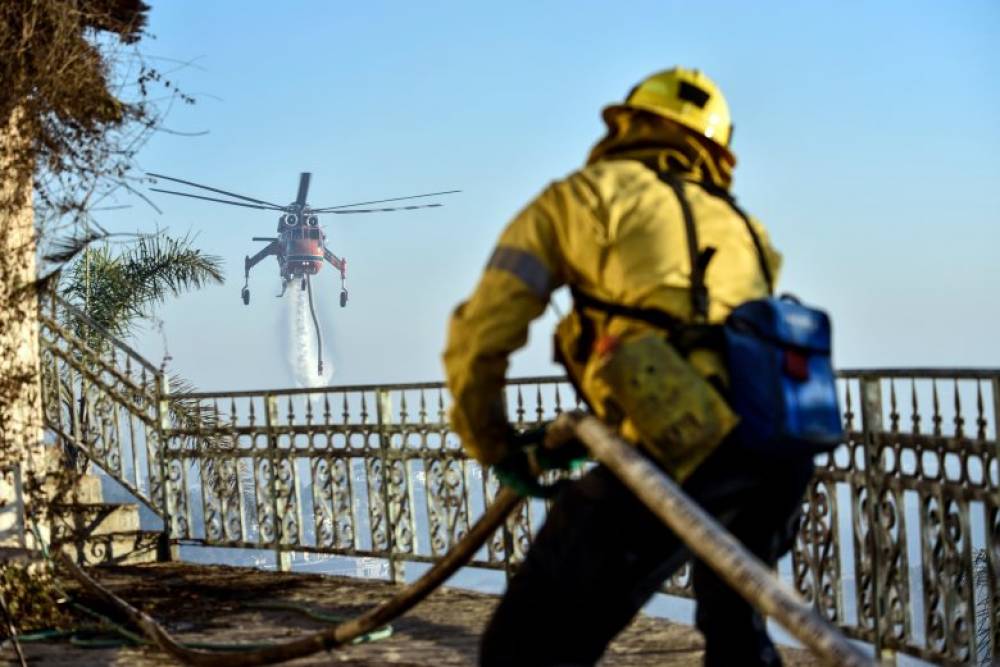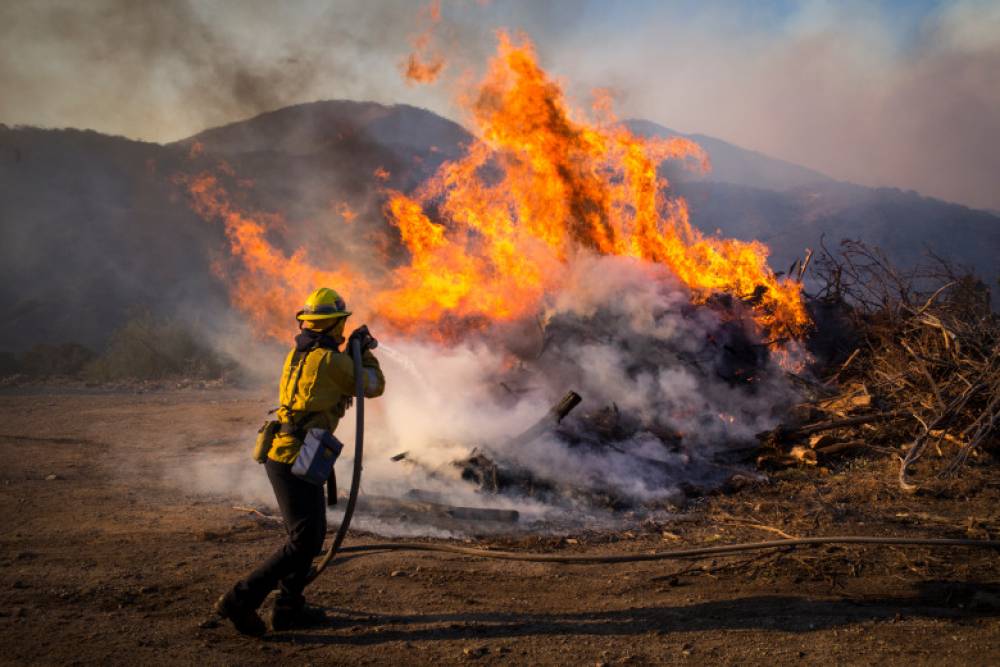Firefighters persist in battle with Southern California fires
At least 150 homes and structures were destroyed and a further 12,000 remain threatened

Tens of thousands of southern California residents were evacuated this week, as flames ravaged neighbourhoods, with around 4,000 firefighters from across the region rushing towards a new blaze on Wednesday.
The wind-driven Thomas fire in Ventura County burned through 90,000 acres as it headed into its third day on Wednesday night.
At least 150 homes and structures were destroyed and a further 12,000 remain threatened.
The fire was at zero percent containment as 1,176 individuals continued to fight the fire from the air and the ground.
In Los Angeles county, a trio of wildfires kept crews working, including the Skirball fire, which destroyed four homes and damaged another 11. The early morning blaze near the Getty museum burned through 475 acres.
In the northeast San Fernando Valley, at least 900 firefighters worked to contain the Creek fire, near Sylmar, where more than 12,600 acres were destroyed, and at least 30 homes and structures were burned. According to officials, the fire was only 5 percent contained and a total of seven Los Angeles firefighters were injured, none with life-threatening injuries.
In Santa Clarita, the Rye fire burned through 7,000 acres and was 10 percent contained.
In the last few years, the prolonged drought and insects have led to the killing of 102 million trees across California and have also produced tonnes of dead, dry chaparral.



“In 2007, we had fires going in every direction down in southern California,” said Cal Fire Deputy Chief Scott McLean.
“Now, there is no fire season. Southern California hasn’t really had weather. Nothing changes as far as topography, but the vegetation does change. There’s a lot of fuel out there right now,” he said.
While on-ground firefighting methods haven’t changed in the last decade, according to officials, more fuel and high winds present a greater challenge, and more danger for those at the front lines.
“In that respect, it’s become much more dangerous on the fire line than in 2007, or even before that,” said Lou Poulson, president of the California Professional Firefighters.
“The intensity of fire behavior and frequency has put a higher level of danger on firefighting,” he said.
“The day and day emergency is bigger than it has been,” added Pouslon.
“Our folks are responding to more calls than they have in years.”
Currently, there are 250 engines from eight states outside of California assisting in fire fighting efforts, he said.
Los Angeles Fire Department spokesman Peter Sanders agreed that resources were challenged, but the 1,300 daily calls for services are still being handled, with the staff of the department standing at 3,500.
“We are quite stretched, but locally, our services are adequate,” said Sanders. He added that when residents adhere to brush clearing regulations, firefighters can gain the upper hand and save more homes.




.png)

.jpg)












.jpeg)

